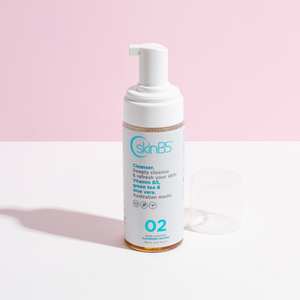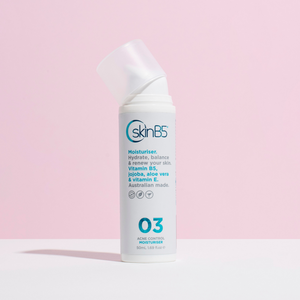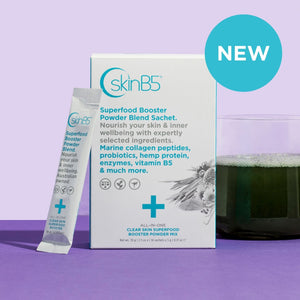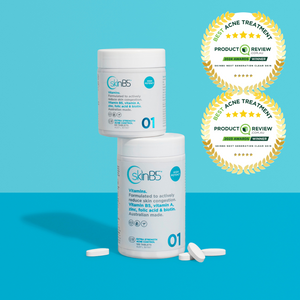The Truth About Using Ice on Pimples
Posted by Jammy Justimbaste on
Dealing with a surprise pimple can be frustrating, whether it’s right before a big event or just part of your daily skincare struggles. One popular quick fix many people swear by is using ice. But does this home remedy actually work, or are we just cooling down our hopes for clear skin?
This blog explores the science behind using ice for pimples, its benefits and potential downsides, and safe ways to include it in your skincare routine. By the end, you’ll know if this natural remedy is worth chilling with—or one to skip.
The Science of Icing Pimples
Pimples, or acne lesions, form when hair follicles become clogged with oil, dead skin cells, and sometimes bacteria. They’re often accompanied by redness and swelling—classic signs of inflammation. This is where the idea of applying ice comes in.
Cold therapy, or cryotherapy, is commonly used to reduce inflammation elsewhere in the body, like with muscle strains or sprains. When applied to the skin, ice causes blood vessels to constrict, temporarily reducing circulation. This can:
- Minimise redness.
- Reduce swelling.
- Numb the painful sensation that often comes with inflamed pimples.
However, while ice can help with certain symptoms, it doesn’t treat the root causes of acne, such as excess oil production or bacterial growth.
Benefits of Using Ice on Pimples
Reduces Swelling
Swollen pimples, particularly cystic acne bumps, can feel tender and appear large due to inflammation. Applying ice can help soothe this swelling, making pimples look less noticeable.
Eases Redness
Redness can make pimples stand out more. Cold temperatures constrict blood vessels, temporarily calming that angry, inflamed look.
Quick Pain Relief
Some pimples—especially deep, cystic ones—can be painful to the touch. Ice acts as a natural numbing agent, offering temporary relief from discomfort.
Cost-Effective
One of the biggest upsides to icing pimples is its accessibility. Most people already have ice cubes or frozen items at home, so there’s no need for fancy equipment or expensive skincare products.
Risks and Downsides of Icing Pimples
While there are clear benefits, it’s important to approach icing cautiously. Improper use can create additional skin issues or worsen existing problems.
Skin Irritation
Too much exposure to cold can irritate the skin, particularly if ice is applied directly without a barrier. Prolonged use or heavy contact can even cause ice burns.
Temporary Effects
The effects of icing—like reduced redness or swelling—are short-lived. The pimple itself may remain beneath the surface, and the root issue won’t be resolved without further treatment.
Worsening Sensitivity
Those with sensitive or rosacea-prone skin may find that icing makes their skin worse, causing redness to spread rather than calm down.
Hygiene Concerns
Using unclean ice directly from a freezer or tray can introduce dirt or bacteria to your skin, potentially worsening acne or leading to new breakouts.
How to Ice Pimples Safely and Effectively
If you’re planning to try icing pimples, follow these tips to protect your skin and maximise the benefits.
Always Use a Barrier
Never apply ice directly to your skin, as this can cause irritation or ice burns. Wrap the ice cube in a clean cloth or paper towel before gently pressing it against the pimple.
Limit Contact Time
Avoid leaving ice on your skin for too long. Stick to short bursts of 30–60 seconds, with short breaks in between. Prolonged cold exposure can damage your skin barrier.
Start with Clean Skin
Make sure your face is freshly cleansed before applying ice. This prevents dirt or oil on the surface from being trapped or spread during the process.
Don’t Overdo It
Moderation is key. Limit how often you rely on icing pimples, as overuse can irritate your skin and weaken its natural defences.
Monitor Skin Reaction
If your skin feels overly raw, sensitive, or shows signs of frostbite (like white patches) after icing, stop immediately and give your skin time to recover.
Are There Better Alternatives?
While icing can provide temporary relief, other treatments may offer more effective, long-term results for pimples. Consider these options:
- Spot treatments: Ingredients like benzoyl peroxide or salicylic acid target clogged pores and bacteria directly.
- Warm compresses: For deeper, cystic pimples, a warm compress can encourage drainage and reduce pain.
- Over-the-counter creams: Retinoids and niacinamide are popular for reducing inflammation and regulating oil production.
- Professional care: For severe or persistent acne, consult a dermatologist for personalised advice and prescription-strength treatments.
Should You Try Ice for Pimples?
Using ice on pimples can be a quick, affordable way to reduce swelling and redness, especially in a pinch. However, it’s not a cure-all. While it can address visible symptoms, it doesn’t tackle the deeper causes of acne.
For those dealing with frequent or severe breakouts, a combination of proven skincare products, a healthy diet, and professional guidance will often yield better results.
FAQs
1. Does applying ice on pimples really work?
Ice can temporarily reduce redness, swelling, and pain associated with pimples by constricting blood vessels and calming inflammation. However, it doesn’t address the root causes of acne, like excess oil production or bacteria.
2. How long should I ice a pimple?
You should limit contact to 30–60 seconds at a time, with breaks in between. Avoid prolonged exposure to prevent skin irritation or damage.
3. Can ice make pimples worse?
If used improperly, such as applying ice directly to the skin or overusing it, it can irritate the area, cause ice burns, or worsen sensitivity.
4. Is ice good for cystic acne?
Ice can help reduce the swelling and pain of cystic acne, but it won't treat the underlying infection or clogged pores. Warm compresses or professional treatments may be more effective for cystic acne.
5. Can icing your face help prevent acne?
While icing may reduce inflammation, it doesn't prevent acne from forming. Regular acne prevention involves proper skincare, hydration, and avoiding pore-clogging products.
6. Is it safe to ice your face every day?
Icing your face daily can be safe if done in moderation and with proper precautions, like using a cloth barrier. Overuse can irritate the skin, especially for those with sensitive skin types.
7. Can ice remove acne scars?
Ice cannot remove acne scars. It may temporarily reduce redness in recent blemishes, but long-term scar treatment typically involves methods like chemical peels, retinoids, or laser therapy.
8. Should I use ice in the morning or at night for pimples?
You can use ice at any time, but applying it in the morning can help reduce swelling and redness before starting your day, while using it at night can calm irritated skin before your skincare routine.
9. Can ice shrink pores?
Ice can temporarily tighten the skin and make pores appear smaller by reducing swelling, but it doesn’t physically shrink pores or change their size permanently.
10. What should I do if icing irritates my skin?
Stop using ice immediately if your skin feels raw, overly sensitive, or shows signs of frostbite (like white patches). Give your skin time to recover and consider gentler alternatives for treating pimples.
The Takeaway
When used correctly, ice can provide soothing relief for inflamed pimples, calming redness and reducing discomfort. However, it’s not a replacement for proven acne treatments that work at the cellular level.
If you’re interested in trying this method, follow all safety tips to avoid irritation or skin damage. Remember—while icing may help in the short term, consistency with a well-rounded skincare routine is the best way to achieve long-term clarity.
Why not pair safe icing practices with other targeted treatments to see what works best for your skin? You’ll be one step closer to managing pimples while keeping your skin health in check.




